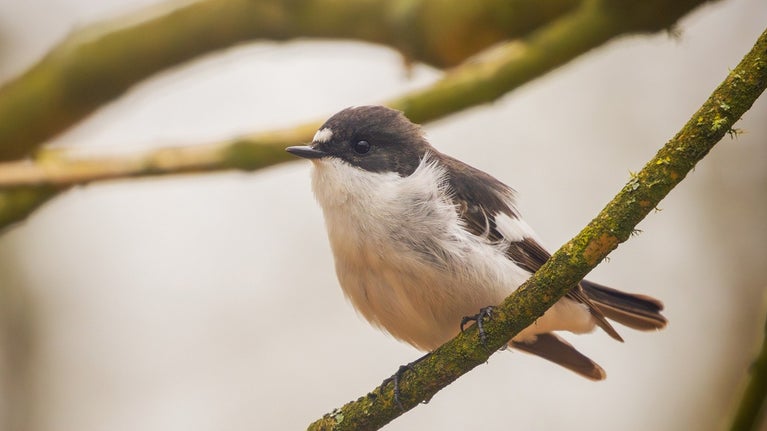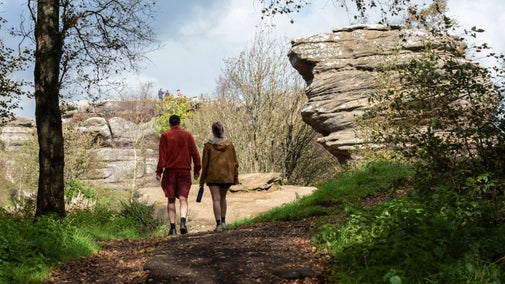
Discover more at Brimham Rocks
Find out how to get to Brimham Rocks, where to park, the things to see and do and more.

Brimham Rocks is a widely unique habitat home to a variety of plants and animals. Discover the abundance of wildlife that calls Brimham Rocks home, from ground-nesting birds such as cuckoos and curlews to a beautiful area of heather moorland.
The rocks and paths can become slippery when wet. Always keep a close eye on children, there are sudden drops and steep slopes across the site. If you need assistance, please call the emergency services (999) and ask for mountain rescue.
The woodland and heather moorland at Brimham Rocks is a unique habitat, home to a variety of plants and offers shelter to numerous insects and ground nesting birds. Discover what you may come across on a stroll across the moor.


Although the titular rocks are the reason many visit, Brimham Rocks also features a beautiful area of heather moorland. It is classified as a Site of Special Scientific Interest (SSSI) due to its globally significant plant life. Three types of heather make up the moorland at Brimham Rocks.
Heather moorland is internationally important because it is rare worldwide and is mostly found in northern Britain. Moorland is a patchwork of dwarf shrubs such as heather and bilberry. It is an open landscape into which we don’t want to introduce shade and must remove trees so the peat does not dry out.
Moorland is a semi-natural habitat created by the removal of woodland by humans thousands of years ago.
Discover the different types of heather at Brimham Rocks
Purple Moor Grass commonly grows on the barer patches of heathland, in woodland areas and around the rocks. Brimham Rocks is also home to Yorkshire’s largest colonies of Bog Asphodel found on wetter parts of the heathland and during the summer months, Heath Spotted and Common Spotted orchids can also be seen in these areas too.
On the heathland parts of Brimham, the dominant ground cover is heather along with patches of bilberry bushes and some bell heather. You can find cowberries and lingonberries here too, which are a northern moorland species found mostly in Yorkshire.
Nidderdale National Landscape is full of contrasts and rich in wildlife and Brimham Rocks is home to only a fraction of what you could find. Windswept moorlands and steep river valleys merge into gently rolling pastoral scenes, peaceful woodlands and tranquil expanses of water.
Visit the Nidderdale National Landscape website to discover where you could explore next in the Nidderdale Valley.

Find out how to get to Brimham Rocks, where to park, the things to see and do and more.

We want to make sure that Brimham Rocks is accessible to as many people as possible. Find out how we can support you when visiting us.

From rocks to moorland, Brimham offers a whole host of different features for visitors to explore. Here are a few highlights and what not to miss on your first, second or thousandth visit.

Find out how our countryside team conserve the moorland at Brimham, from trialling different bracken control techniques to introducing Belted Galloway cattle to graze.

Discover the millions of years of natural history evident at Brimham Rocks, which has been enchanting visitors for centuries.

Championing Nidderdale, supporting local voluntary and community groups, helping residents access a wealth of local services and signposting tourists.